Don’t Forget About DECT In Your Microsoft Teams Rollout
When Microsoft announced that its Teams Phone solution has passed 12 million voice-enabled users, you might have been fooled into thinking that was the market captured.
Surely, by 2022, the cloud communications market has been penetrated by now?
What if we told you that, out of an available market of 467 million users, only 392 million of those are yet to move to the cloud?
That’s only 18%!
So, where does the rest of the 82% sit?
Maybe you won’t be surprised to hear that the bulk of those are common area licenses and deskless workers.
The VoIP licenses that get left until last.
And, until now, forgotten about…
Does that mean they’re not important?
Can they stay on a PBX or gateway while the rest of a business moves to the cloud?
Sure, they could. But that doesn’t sound much like digital transformation. And it means paying for and maintaining legacy equipment when you can now move the entire voice estate to the cloud.
Table of Contents
Microsoft Teams Phone growth moves the needle
The growth of Microsoft Teams telephony has somewhat accelerated digital transformation plans.
When you think about how many Teams active monthly users there are (and Cavell now forecasts 285m), a good percentage must have been/are still craving a single provider for calling, meetings, and messaging.
And Microsoft has reacted to that. Not only does Teams Phone provide a market-leading calling solution, but it also now supports DECT handsets registering with Microsoft’s native SIP gateway.
What does this mean?
- Handset manufacturers can now integrate DECT handsets with Microsoft Teams.
- Resellers can now secure the entire VoIP estate in a single deal.
- Users can complete their cloud transformation.
This is great news for everyone.
Think about the businesses retaining legacy equipment and leaking budgets. The experience is either compromised by not connecting with the rest of the business or is time-consuming and troublesome to support.
Now, every handset in use by warehouses, healthcare providers, logistics firms, and many other use cases where the frontline workers need to connect with the rest of the business, can finally come together.
That’s unified communication.
So, how do you go about this?
Who supports Microsoft Teams DECT handsets?
At Enterprise Connect in March 2022, Microsoft announced several vendors were working on Microsoft-certified DECT devices:
- Spectralink
- Poly
- Ascom
- Yealink
- Gigaset
As of August 2022, two vendors have released their offerings…
Spectralink DECT for Microsoft Teams
Spectralink was first to market with its DECT solution for Microsoft Teams.
Offering entry-level handsets that are durable, droppable, and cleanable, as well as higher-end models specific to healthcare use, the 72, 75, 76, and 77 series are available for direct integration with a Teams deployment.
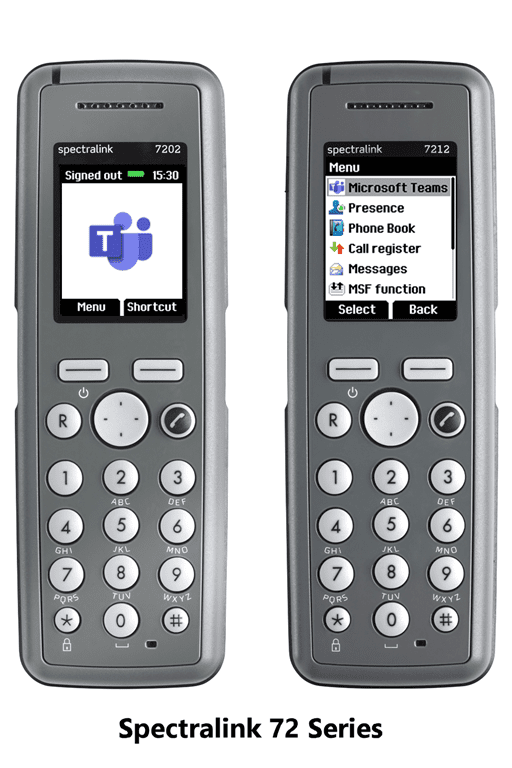
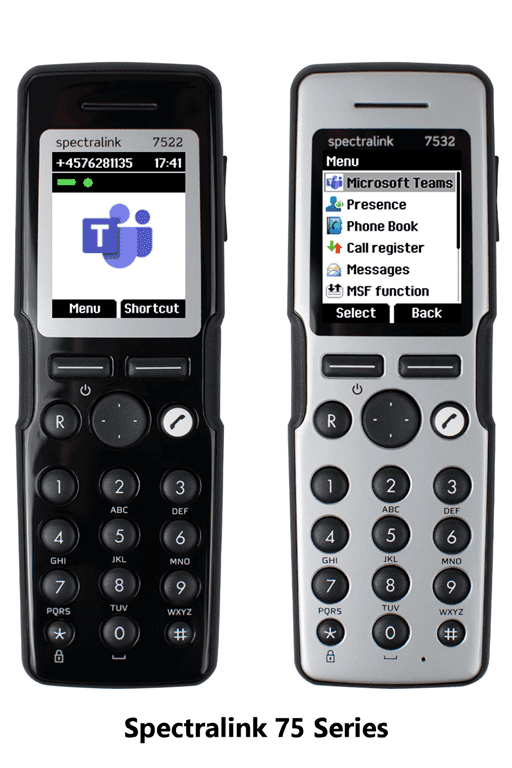
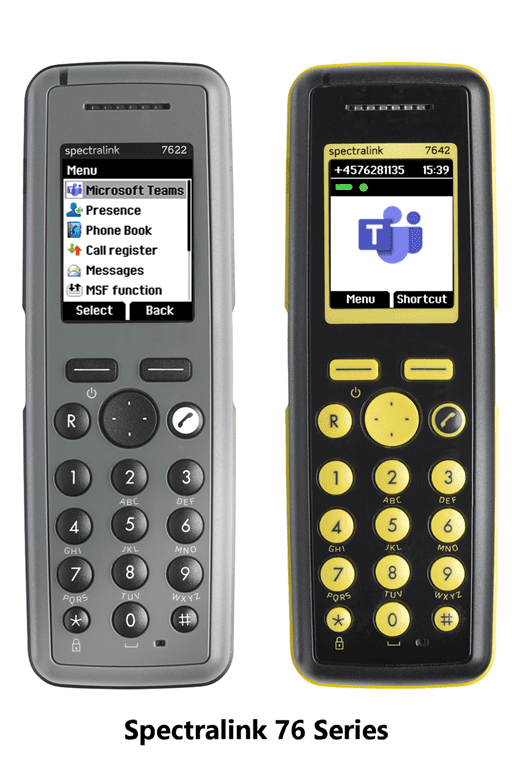
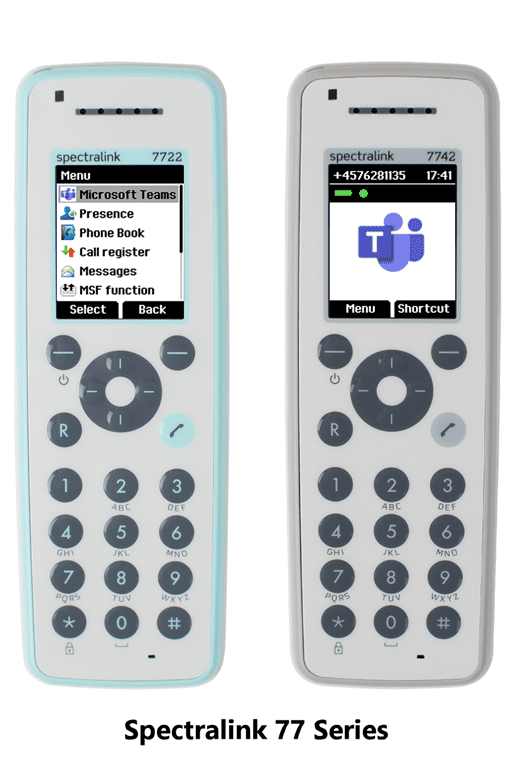
As you work up the model numbers, features increase. New features like advanced messaging mode get added, for example.
At the most basic level, the 72 series is perfect as an inexpensive option for users who purely need to make calls.
At the highest level, expect built-in accelerometers and movement (or lack of movement) sensors.
Accompanying the handsets is a base station. The Spectralink range is 50 meters indoors and 300 meters outdoors—dependent on conditions like network performance or thick walls.
You’ll also need a server which is the brains of the DECT solution. Spectralink provides several options here too:
- IP-DECT 200
- IP-DECT 400
- IP-DECT 6500
- VIP DECT Server One (support for up to 4,096 base stations)
Poly DECT for Microsoft Teams
Poly announced two of their devices shortly after Spectralink, the Rove 30 and Rove 40.
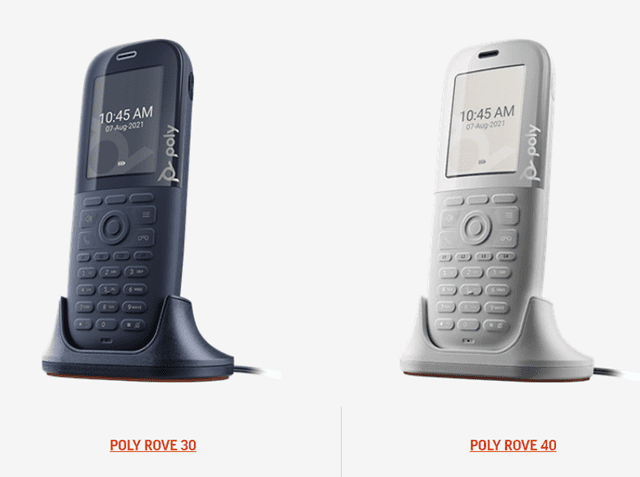
Both handsets have been tested to drop from a two-metre height and come with quoted talk time of 18 hours (and standby time of 300 hours); ideal for users who are always on the move. Handsets can charge overnight and be used for the entire day.
The Rove 40 has upgraded features like:
- Option to connect a BlueTooth headset
- Dedicated emergency button
- Vibration mode
You’ll also need a base station with either handset.
The B2 base station is a single cell deployment and supports 20 handsets in total. The B4 is a multi-cell deployment and can support 30 handsets per base station and 1,000 handsets per system.
Further DECT options for Microsoft Teams
Microsoft expects DECT solutions from Ascom, Yealink, and Gigaset by the end of 2022.
If you’re yet to move to Microsoft Teams for voice, and have a desire to, there’s no longer a need to hold back for DECT support.
Microsoft’s commitment to frontline and deskless workers is clear to see. And with its continued support and growth in the UCaaS market, expect further innovations in this sector.
Service providers and resellers should contact their relevant contact at each manufacturer to arrange a demo or order for their customers.
Users and IT admins ready to dot the “i”s and cross the “t”s on their cloud communications project should speak to their provider about sourcing a Teams DECT solution.
There’s no longer a reason to forget about DECT in your Microsoft Teams rollout.
Share this post
Andy MacQueen
Andy MacQueen is an EMEA Business Development Director at Spectralink Corporation, responsible for analysing, planning and executing business strategy.
